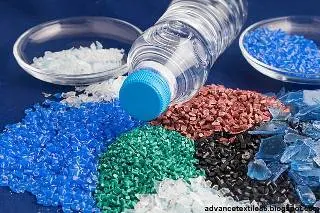Polyethylene terephthalate
Polyethylene
terephthalate is the most common thermoplastic polymer resin in the polyester
family and is used in combination with glass fibers for engineering resins
for the manufacture of fibers for clothing, liquids, and food containers and
thermoforming for production. Most of the world's PET production is used to
make synthetic fibers, and the global demand for bottle production is about
30%. Among textile applications, polyester is referred to as PET, and it is
commonly used in packaging. Polyester accounts for about 18% of world polymer
production and is the fourth most produced polymer after polythene,
polypropylene, and polyvinyl chloride.
Polyethylene terephthalate properties
i.
Polyethylene terephthalate in its natural state is a colorless,
semi-crystalline resin.
ii.
It can be semi-rigid to rigid
iii.
It is a very lightweight material.
iv.
This creates a good gas and fair moisture barrier, as well as a good barrier
for alcohols and solvents.
v.
It is a strong and impact-resistant substance.
vi.
It becomes white when exposed to chloroform.
vii.
It can be produced by rapidly cooling molten polymer
viii.
Crystalline polyethylene terephthalate is opaque and white in most cases.
ix.
One of the most important properties of PET is referred to as its intrinsic
viscosity.
x.
It is hygroscopic in nature.
xi.
It can also be dried in compressed air resin dryers.
The synthesis process of polyethylene terephthalate
In
the process of terephthalic acid, the growth of ethylene glycol and
terephthalic acid is carried out directly at medium pressures such as 2.7-5.5
bar and at high temperatures such as 220-260°C. Water is removed in the
reaction, and it is also continuously removed by distillation:
n
C6H4(CO2H)2 + n HOCH2CH2OH → [(CO)C6H4(CO2CH2CH2O)] n + 2n H2O
Polyethylene terephthalate common uses
i.
Plastic bottles that are made from PET are widely used for soft drinks.
ii.
Due to its high mechanical strength, its film is often used in tape
applications.
iii.
Non-oriented polyethylene terephthalate sheets can be thermoformed to make
packaging trays and blister packs.
iv.
Polyethylene terephthalate clamshell packaging used to sell fruit, hardware,
etc.
v.
When the glass particles or fibers are filled, it is significantly harder and
more durable.
vi.
It is used as a substrate in thin-film solar cells.
vii.
It is also used as a waterproofing barrier in undersea cables.
viii.
It is used as a 3D printing filament, as well as in the 3D printing plastic
PETG.









0 Comments